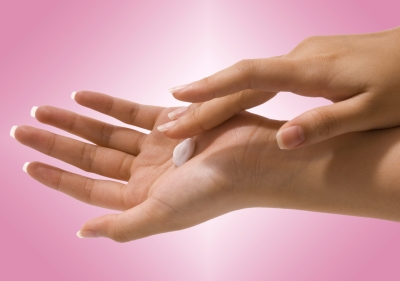
 We were really excited at CV Skinlabs to hear that our Restorative Skin Balm was recently featured in Lucky Magazine’s online community. Writer Indie Lee, founder of her own line of all-natural beauty products, suggested our product as a much better natural alternative to standard moisturizers that contain petroleum products.
We were really excited at CV Skinlabs to hear that our Restorative Skin Balm was recently featured in Lucky Magazine’s online community. Writer Indie Lee, founder of her own line of all-natural beauty products, suggested our product as a much better natural alternative to standard moisturizers that contain petroleum products.
Why should we stay away from petroleum? Indie mentions a number of reasons, including the fact that it’s often delivered in impure forms that carry potentially harmful toxins. We’ve added some more information below, both from Indie’s writings and our own.
What Are Petroleum Products?
First discovered in the mid-nineteenth century, petrolatum is a byproduct of crude oil that used to form on the country’s first oil rigs. It was later discovered that when chemists refined this “rod wax” as it was called, they could produce a thinner, light-colored gel that soon became one of the primary products used to heal burns and other injuries-petroleum jelly.
Later studies showed that petroleum jelly had no medicinal affect on skin, and that its supposed “healing properties” were due only to its ability to form a shield or “seal” over the skin, which protected it from infectious agents and helped hold moisture inside.
Today, many manufacturers use petroleum ingredients in personal care products simply because of that sealing action-by reducing moisture loss, it can soften skin and lubricate hair in the short term.
Where Does It Come From?
In 2007, the Environmental Working Group (EWG) conducted a study that showed 22 percent of all cosmetic and skin care products may be contaminated with a chemical by-product called 1,4-dioxane, and that 80 percent may be contaminated with one or more carcinogenic impurities, including formaldehyde and polycyclic aromatic hydrocarbons (PAHs).
“These trace contaminants in petroleum-based ingredients often readily penetrate the skin according to government and industry studies,” the group said in a press release, “and their presence in products is not restricted by government safety standards-they are legal at any level.”
PAHs are found in crude oil, and according to the Centers for Disease Prevention and Control (CDC), may cause harmful effects on the skin (as shown in animal studies). The Department of Health has also determined that some may be reasonably expected to be carcinogens.
The EWG’s Skin Deep Database rates contamination concerns with petroleum products, particularly with PAHs, as a 9 out of 10, and adds that the Environment Canada Domestic Substance List classifies the ingredient as expected to be toxic or harmful.
High-grade “USP white petroleum jelly,” which is a FDA-regulated product used in food, drugs, and food packaging, has a zero, low-hazard rating by the EWG, and is considered pure. This is a different product than that used in many personal care products, however.
Trying to find out if truly refined and purified petroleum products are used in cosmetic products is difficult, as the manufacturers are not required to inform us of that on the product label. Since the EWG has found contaminants in the products tested, it seems that many of our common products still have forms of petrolatum that are contaminated with toxic byproducts.
Other Downsides to Petrolatum
In addition to the contamination concerns, which provide the largest health risk, petrolatum products can also disrupt the natural functioning of skin, leading to additional problems such as dryness, wrinkles and fine lines, and acne.
Because the product forms a seal over the skin, it prevents moisture loss, but also fails to impart any additional moisture or nutrients to the skin. Therefore, if the skin is already dry or damaged, as skin often is, petroleum products can actually exacerbate the problem, causing additional dryness, flaking, and the appearance of more fine lines over time.
Furthermore, this seal can trap toxins, dirt, and other contaminants against the surface of skin that would otherwise pass through the pores. That means a greater chance that bacteria and skin oil will clog up, causing blackheads and pimples. This sealing action can also slow the regular cell turnover that occurs in skin, making skin look older than it is.
In fact, petroleum products are so “sealing” that they are often used by swimmers to stay warm while taking ocean swims, because of their ability to trap heat inside the body.
A Better Alternative
As Indie says in her article, CV Skinlabs Restorative Skin Balm is a petroleum-free option filled with natural, nourishing ingredients that not only hydrate and moisten skin, but help it heal without suffocating it or exposing it to potentially dangerous toxins.
We know more today about skin and skin care products than we used to. There’s just no reason to use yesterday’s products when modern studies have revealed their flaws. Try Restorative Skin Balm for yourself, and let us know what you think. Otherwise, to avoid petroleum ingredients in your products, read labels and switch to trusted, natural brands from conscientious companies that are creating real, nourishing formulas.
Do you avoid petroleum ingredients in your personal care products? Please share your tips.
Picture courtesy Stuart Miles, via freedigitalphotos.net.
Sources
“ToxFAQs for Polycyclic Aromatic Hydrocarbons (PAHs),” CDC, September 1996, http://www.atsdr.cdc.gov/toxfaqs/tf.asp?id=121&tid=25.
“EWG Research Shows 22 Percent of All Cosmetics May Be Contaminated with Cancer-Causing Impurity,” EWG Press Release, February 8, 2007, http://www.ewg.org/news/news-releases/2007/02/08/ewg-research-shows-22-percent-all-cosmetics-may-be-contaminated-cancer.

